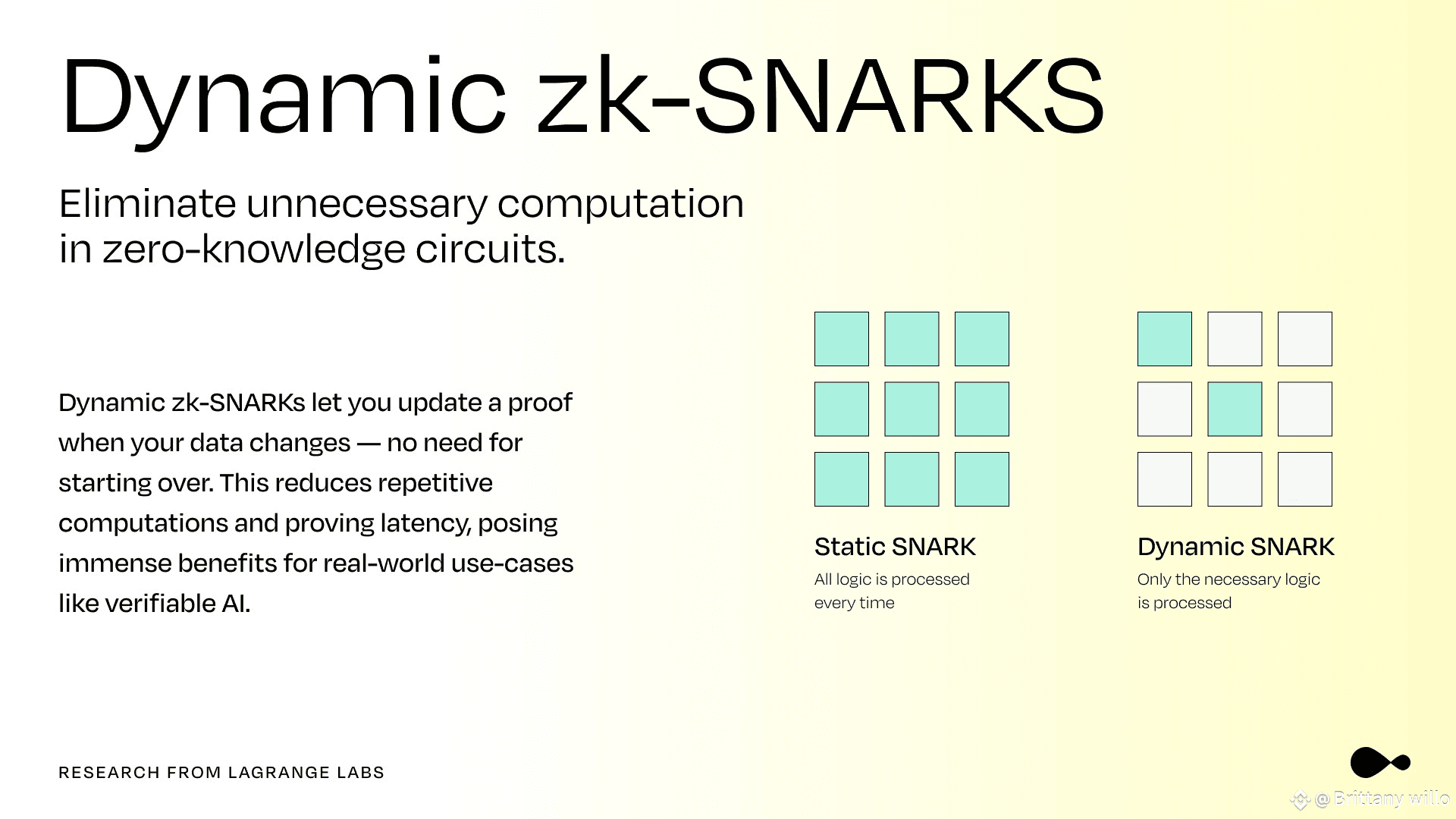The modular blockchain stack is evolving fast, and one protocol quietly shaping its foundation is Lagrange. Unlike hype-driven projects, Lagrange has taken a methodical approach releasing targeted innovations that directly solve developer pain points while strengthening the backbone of trustless computation.
ZK-Indexed Batch Proofs: More Than Just Speed
Their latest breakthrough ZK-indexed batch proofs with dynamic latency thresholds isn’t just about faster performance. It’s a forward-looking mechanism designed to address scalability at the protocol level. In practice, this means proofs can be generated and verified in a more flexible, efficient way without sacrificing security. For developers, this translates to smoother integration and the ability to build applications that scale with real-world demand.
Dynamic SNARKs: Proofs That Evolve
Previously, proof systems were rigid and costly. A single change in data often meant recomputing the entire proof set, wasting time and resources. Lagrange’s research team tackled this with Dynamic SNARKs, allowing proofs to adapt as new data comes in eliminating unnecessary recomputation. This innovation opens the door for more agile applications, from DeFi protocols handling live transaction streams to gaming and AI models that require constant updates.

SDK That Grows With Developers
Another area where Lagrange shines is its developer-focused SDK. Instead of releasing a monolithic product, the team has been rolling out integrations, toolkits, and APIs in a rapid but deliberate manner. This approach ensures that builders can plug into Lagrange’s ecosystem with minimal friction, while the protocol itself continues to evolve organically alongside developer needs.
$LA : A Token With Real Utility
In a landscape where many tokens feel like afterthoughts, $LA stands out as a utility-driven asset. It powers governance, incentivizes computation, and anchors the protocol’s economic security. The token isn’t just symbolic—it’s embedded in the mechanics of how Lagrange functions, making it essential to the protocol’s long-term viability.
Why Lagrange Matters
Lagrange isn’t positioning itself as a trendy add-on to Web3. Instead, it’s quietly establishing itself as a core piece of decentralized infrastructure one that blends performance, adaptability, and economic alignment. For developers, investors, and ecosystem builders, it represents a shift toward proof systems that aren’t just technically sound, but practical and future-proof.


